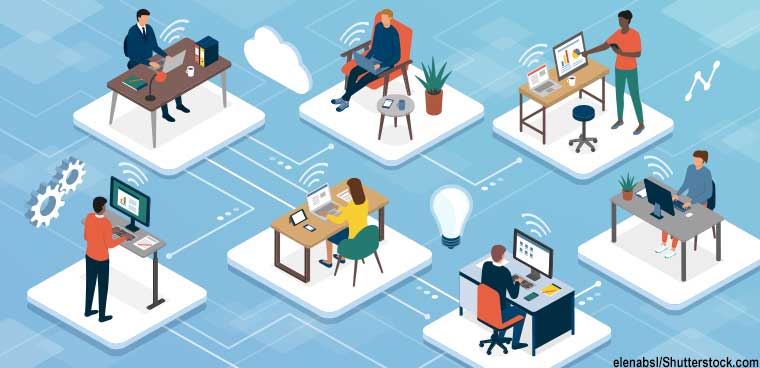Pandemic pivots at State, FCC
The necessary wave of IT adaptation to the pandemic showed federal CIOs and agencies they could move quickly and efficiently to modernize.

The initial ordeal of adapting to the pandemic IT environment has evolved into a speedier and focused view of system modernization at federal agencies, according to some federal CIOs.
That initial wave of setting up laptops and building remote work systems was stressful, but it may have advanced federal IT modernization efforts by years, according to Stuart McGuigan, CIO of the U.S. State Department's Bureau of Information Resource Management.
The pandemic, he said in remarks during a Dec. 10 ATARC IT modernization summit, has accelerated modernization at his agency by five years, with the adoption of collaborative tools and a more utilitarian view of new technology.
"The best way to learn a language is to be dropped into a country and have to figure out how to survive," he said. "The same is true of collaborative technology, when that is the only way to get things done,"
The pandemic brought a shock to the agency's workers, who were accustomed to meeting in person, both in the U.S. offices and in diplomatic hubs worldwide, said McGuigan. They had to adapt quickly to collaborative technologies such as Webex and Zoom.
That experience, according to McGuigan, has been positive in many ways. The agency moved to a more agile and practical way of seeing IT modernization, he said, sharpening the agency's adaptation of IT applications, stripping them down to the initial bare essentials.
After the beginning of the pandemic, the agency began setting up "minimal viable products" for access and other basic IT functions. Those products were modified as needed and requested by users which wound up slimming down unneeded applications and operations, he said. The closer alliance to mission needs has also brought better alignment to the agency's business model, he said.
For Federal Communications Commission's CIO Francisco Salguero, who started at the agency a year ago, remote work is normal, not an exception. The FCC, he said, had telework capabilities, but it required refinement as the pandemic moved ahead. Modernization for the FCC has become more utilitarian. "How do we get capabilities into users' hands and have the connections to use it?" he asked.
Salguero said standardization of commodity IT, as well as documentation, are critical when putting a new system together. He said the agency has learned how to roll out new technology in a friendlier, more consumer-like way to its employees as a result of the pandemic. "It's the little things as well as the big ones," he said.
The pandemic gave federal IT modernization momentum and agencies responded well to the stress, said Maria Roat, deputy federal CIO in the Office of Management and Budget in remarks at the ATARC event, but some stubborn obstacles remain. "The pandemic highlighted how fast we can push technology solutions and get through cumbersome procedures and bureaucracy," she said.
"Large modernization projects take time and funding and flexibility to really manage well," she said. "Congress can help us because when we start looking at one-year funding, it creates risk and uncertainty."
The MGT Act and the Technology Modernization Fund are critical, she said. "As a CIO, not knowing what my budget is going to be, I can't drive multi-year modernization projects."
NEXT STORY: Biden taps former Obama aide to lead VA


